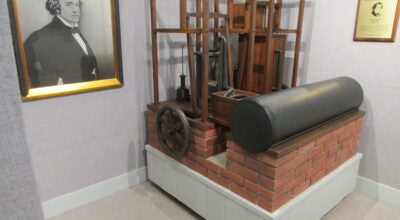Christmas scenes and treasures
Published 3:25 pm Tuesday, December 10, 2019
|
Getting your Trinity Audio player ready...
|
After our Christmas celebration last Sunday night, a celebration in which we sang the familiar hymns of Christmas, but also included a few of the secular songs too, a church member told me a precious story. It could happen only in these years of digital cell phones.
Her grandson “face-timed” her. I’m sure all of you know what that means, but just for the record, “face-time” is when we are called on our cell phones and can actually see who we are talking to.
Her beloved grandson was “face-timing” her but held his head down, suspiciously, so that she could not see his mouth clearly.
He spoke, “Nana, I know what I want for Christmas.”
Nana asked, “What?”
I can only imagine, knowing her grandson from his coming to church with her, how he slowly lets his mouth be seen and smiles as he says, “My two front teeth!” Of course all of us of a certain age remember the Christmas novelty song, “All I Want for Christmas is My Two Front Teeth.” It was written in thirty minutes by a second grade school teacher, Donald Yetter Gardner, in 1944.
Gardner asked his second grade students the question, “What do you want for Christmas?” He noticed that just about all of them were missing at least one front tooth.
By far the most popular Christmas song of the novelty genre would be “Rudolph the Red-Nosed Reindeer.” The character, Rudolph, was created for commercial purposes by the Montgomery Ward department store.
The department store had been buying and selling children’s coloring books for Christmas and decided if they could simply write and produce their own coloring book, they would save money. Or, they probably thought, they could make more money. Capitalism is well-thought of during Christmas.
They gave the assignment to Robert May and he went to work on the project in 1939. His daughter liked reindeer so May thought about a story based upon “Rollo” or “Reginald” the Reindeer. Interesting, isn’t it, that the song could be anything but “Rudolph.”
He settled on “Rudolph,” but what would the story be about? May was looking out his office window in downtown Chicago when the answer came. The fog off Lake Michigan was so thick that nothing could be seen. Then it came to Robert May in a flash.
“That’s it,” he figured. It’ll be a story about a reindeer named “Rudolph” who had a big and bright red nose that would guide Santa and the others through the thick fog. The rest is history. An entire industry was born based on a coloring book idea.
The biggest boon to the “Rudolph” business was added by May’s brother-in-law, Johnny Marks. In 1949, Marks wrote a little ditty featuring the red-nosed reindeer. He offered his song to the most popular singing cowboy of the day, Gene Autry. By Christmas of the year I was born, 1949, Autry had rode, not Champion the Wonder Horse, but “Rudolph the Red-Nosed Reindeer” to the top of the Billboard music chart.
Autry sold 2.5 million copies that year and would sell a total of 25 million copies of “Rudolph.” Since Gene Autry owned so much real estate in Los Angeles, we might say that Rudolph’s red nose led to some green paper!
From a personal point of view, I’ve been singing Christmas songs all my life and, when looking into the faces of children, there’s no song that brings as many smiles and participation as “Rudolph, the Red-Nosed Reindeer.”
There are plenty of other songs that are fun. These few weeks of Christmas are full of busy-ness and stress, but the treasures are there if we will only take the time to find them. I hope, that in spite of the fog, you find your Christmas treasures this year.





